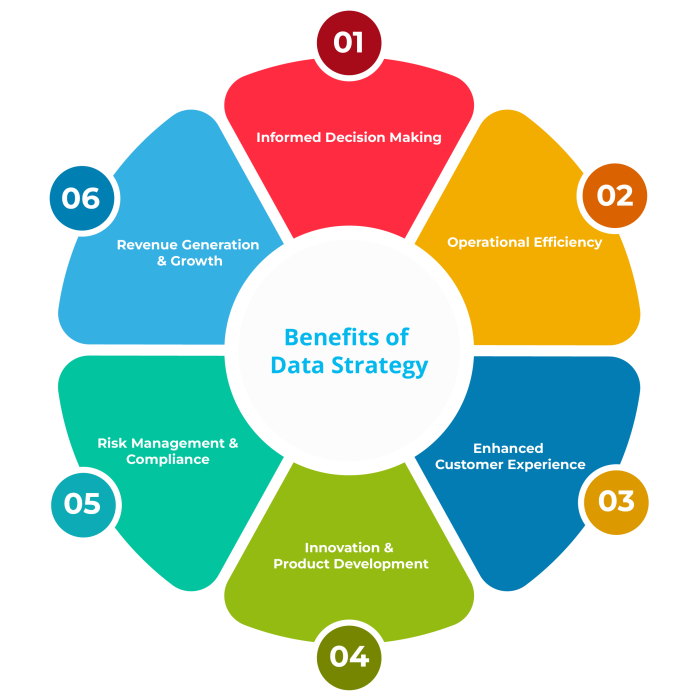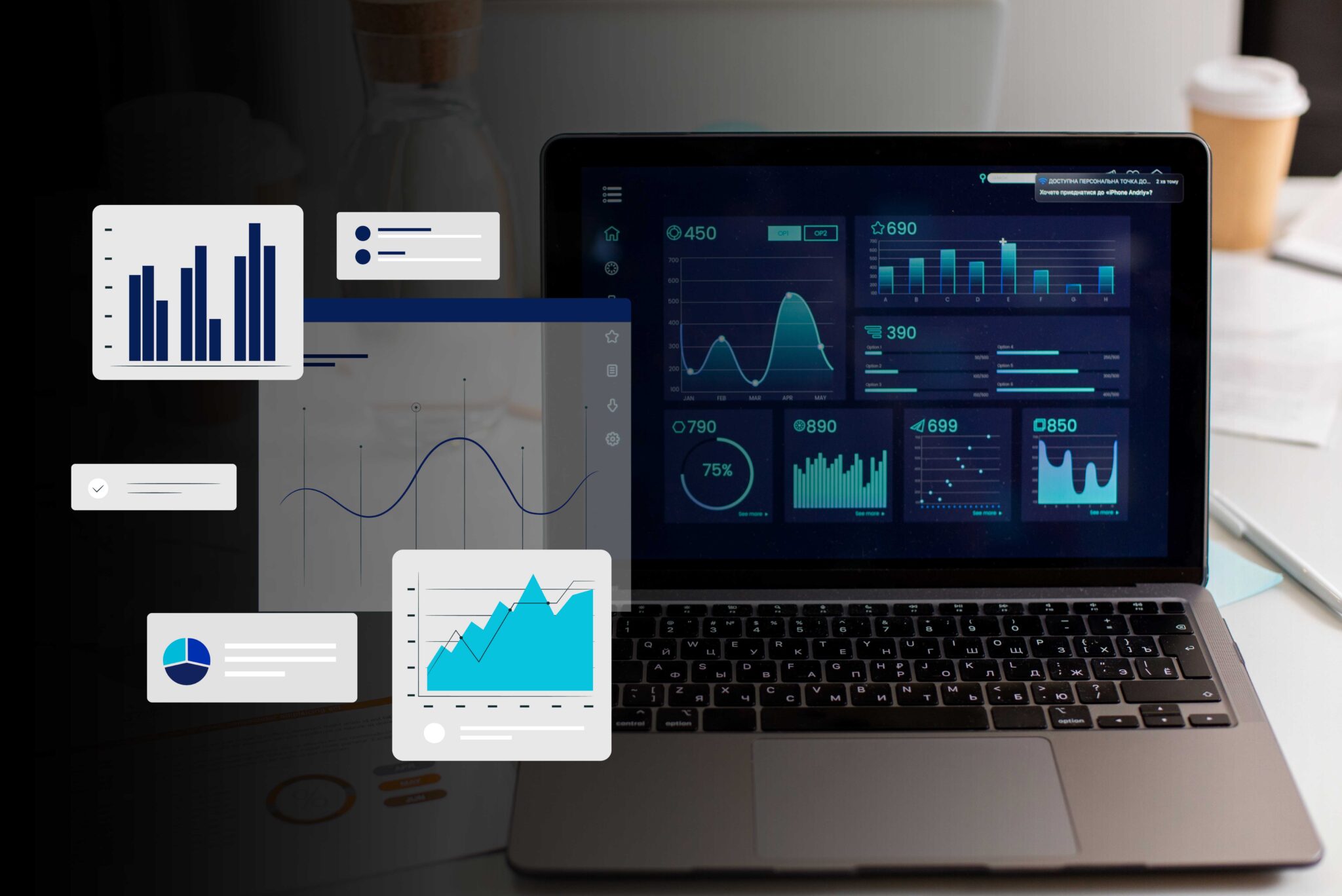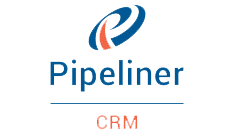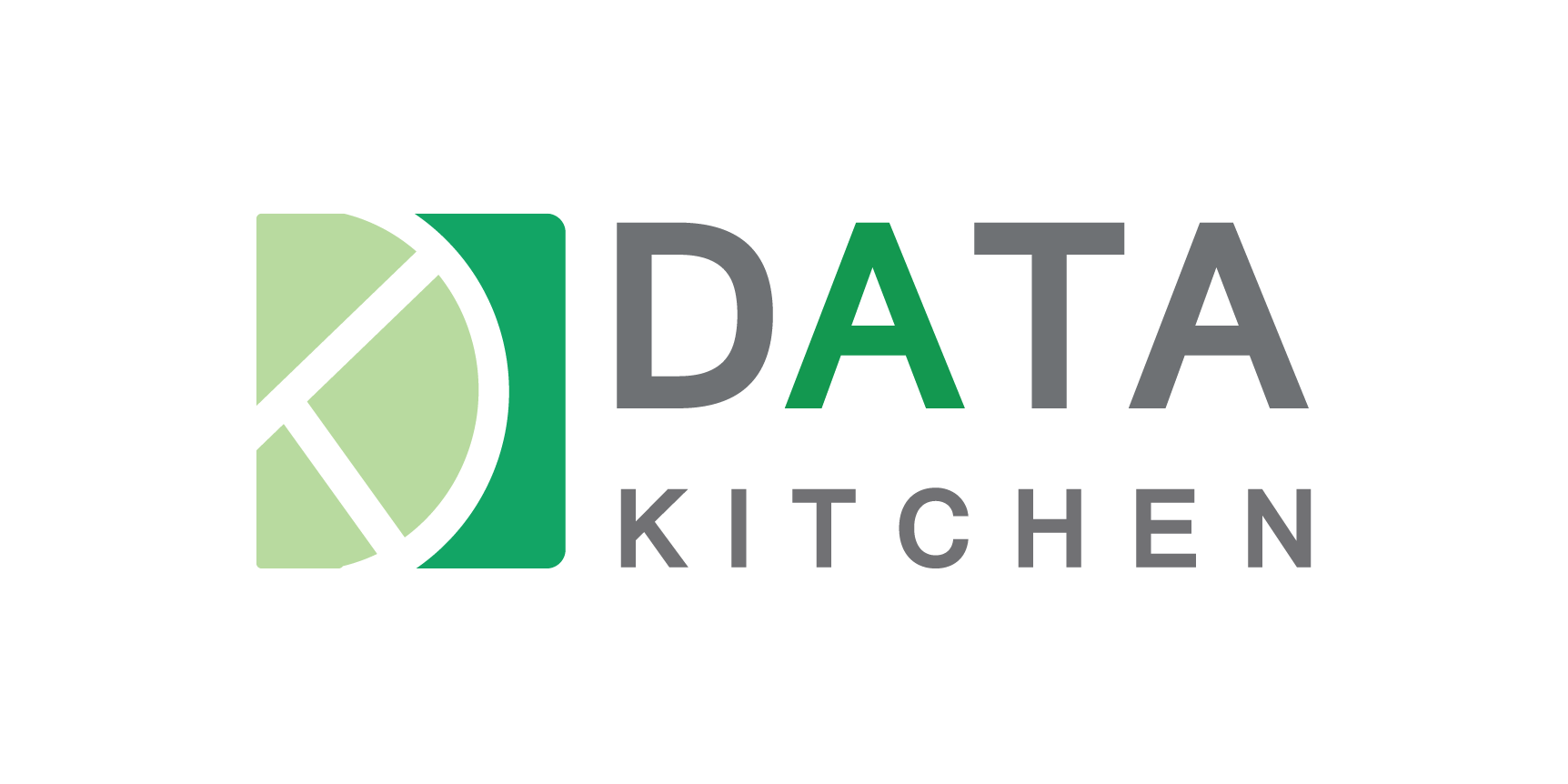Data Strategy
Without a well-defined strategy, data remains an untapped asset. We specialize in Data Strategy Services, helping organizations transform their data into a strategic resource that drives growth, innovation, and competitive advantage.

Our Data Strategy Services
Data Assessment and Readiness

Data Audit
We begin with a comprehensive analysis of your existing data assets and infrastructure.

Data Readiness Assessment
Evaluating the quality, completeness, and relevance of your data.
Data Strategy Development

Strategic Planning
Collaboratively defining your data objectives and aligning them with your business goals.

Data Roadmap
Creating a clear, actionable plan to guide your data initiatives.
Data Governance and Compliance

Governance Framework
Establishing policies and procedures for data quality, security, and compliance.

Privacy and Compliance Measures
Ensure your data practices adhere to relevant regulations.
Data Integration and Management

Data Integration Strategies
Implementing efficient methods for integrating data from diverse sources.

Master Data Management
Developing strategies to ensure data consistency and accuracy.
Data Analytics and Insights

Advanced Analytics
Leveraging data for predictive and prescriptive analytics.

Business Intelligence
Developing dashboards and reports for data-driven decision-making.
Data Security and Risk Management

Security Protocols
Implement robust security measures to protect your data.

Risk Assessment
Identifying potential risks and developing mitigation strategies.
Continuous Monitoring and Optimization

Performance Metrics
Establishing key performance indicators (KPIs) to monitor data strategy effectiveness.

Optimization Strategies
Fine-tune your data strategy to adapt to changing business conditions.
Training and Change Management

User Training
Equipping your team with the knowledge and skills to effectively leverage data.

Change Management
Managing the cultural shift towards data-driven decision-making.
How can you benefit from Data Strategy?
Informed Decision Making
- A well-defined data strategy ensures that decision-makers have access to accurate, timely, and relevant data. By leveraging data-driven insights, organizations can make informed decisions that drive efficiency, mitigate risks, and capitalize on emerging opportunities.
Operational Efficiency
- Data strategy streamlines processes by optimizing data collection, storage, analysis, and utilization. This efficiency gains not only save time and resources but also enhance operational agility and responsiveness to market dynamics.
Enhanced Customer Experience
- By analyzing customer data, organizations can gain deeper insights into customer behaviors, preferences, and sentiment. This understanding enables personalized marketing campaigns, product recommendations, and tailored services, thereby fostering stronger customer relationships and loyalty.
Innovation and Product Development
- Data strategy fuels innovation by uncovering market trends, identifying emerging needs, and facilitating experimentation. By analyzing vast amounts of data, organizations can develop innovative products and services that resonate with customers and differentiate them from competitors.

How it Works
01. Strategic Alignment
-
Define Clear Objectives: Establish specific, measurable, achievable, relevant, and time-bound (SMART) objectives that align with the organization's strategic goals.
-
Stakeholder Engagement: Engage key stakeholders across departments to ensure their input and buy-in, fostering alignment between data initiatives and business objectives.
-
Regular Review and Alignment: Continuously review and align data initiatives with evolving business strategies, adapting the data strategy as needed to maintain alignment.
03. Data Collection and Integration
- Data Source Identification: Identify and prioritize relevant data sources across the organization, including internal databases, external sources, and third-party data providers.
-
Integration Architecture: Design and implement an integration architecture that enables seamless data flow between disparate systems, ensuring data consistency and integrity.
- ETL Processes: Develop Extract, Transform, Load (ETL) processes to extract data from source systems, transform it into a usable format, and load it into the target data repository.
05. Data Visualization and Reporting
-
Dashboard Design: Design intuitive and interactive dashboards that visualize key performance indicators (KPIs) and trends, providing stakeholders with real-time insights into business performance.
-
Report Customization: Customize reports to cater to the specific needs of different stakeholders, ensuring that they receive relevant and actionable insights in a format that is easy to understand and interpret.
-
Accessibility and Distribution: Ensure that dashboards and reports are accessible to relevant stakeholders across the organization through appropriate distribution channels, such as email, intranet portals, or mobile applications.
02. Data Governance
-
Establish Policies and Standards: Develop comprehensive data governance policies, standards, and procedures covering data quality, privacy, security, and compliance requirements.
-
Roles and Responsibilities: Define clear roles and responsibilities for data stewards, data owners, and other stakeholders involved in data governance, ensuring accountability and oversight.
- Compliance and Risk Management: Implement mechanisms for monitoring and enforcing compliance with regulatory requirements and mitigating risks related to data security, privacy, and integrity.
04. Data Storage and Management
-
Storage Infrastructure: Select and implement appropriate storage infrastructure, such as relational databases, data warehouses, data lakes, or cloud-based storage solutions, based on performance, scalability, and cost considerations.
-
Data Lifecycle Management: Define policies and procedures for managing the data lifecycle, including data retention, archiving, and disposal, to optimize storage resources and comply with regulatory requirements.
-
Backup and Disaster Recovery: Establish robust backup and disaster recovery mechanisms to ensure data availability and integrity in the event of system failures, cyber attacks, or natural disasters.
01. Strategy
- Clarification of the stakeholders’ vision and objectives
- Reviewing the environment and existing systems
- Measuring current capability and scalability
- Creating a risk management framework.
02. Discovery phase
- Defining client’s business needs
- Analysis of existing reports and ML models
- Review and documentation of existing data sources, and existing data connectors
- Estimation of the budget for the project and team composition.
- Data quality analysis
- Detailed analysis of metrics
- Logical design of data warehouse
- Logical design of ETL architecture
- Proposing several solutions with different tech stacks
- Building a prototype.
03. Development
- Physical design of databases and schemas
- Integration of data sources
- Development of ETL routines
- Data profiling
- Loading historical data into data warehouse
- Implementing data quality checks
- Data automation tuning
- Achieving DWH stability.
04. Ongoing support
- Fixing issues within the SLA
- Lowering storage and processing costs
- Small enhancement
- Supervision of systems
- Ongoing cost optimization
- Product support and fault elimination.
Why Choose Us for Data Strategy

Expertise
Our team comprises seasoned data strategy professionals with extensive industry experience.

Custom Solutions
Tailored data strategies designed to meet your specific business needs.

Data Security
We prioritize data security and compliance throughout the strategy development process.

Measurable Results
We focus on delivering tangible, measurable results that drive business success.
How can you benefit from Legacy ETL to Modern Data Pipelines?
Enhanced Scalability
-
Modern data pipelines are designed with scalability in mind, leveraging cloud computing and distributed processing technologies.
Real-Time Data Processing
- The ability to process data in real-time (or near real-time) is a significant advantage of modern data pipelines over traditional batch-oriented ETL processes.
Greater Flexibility and Agility
- Modern data pipelines are more flexible in terms of data sources they can handle, the types of transformations they can perform, and how quickly they can adapt to changes in business requirements.
Cost Efficiency
- By leveraging cloud services and open-source technologies, modern data pipelines can significantly reduce infrastructure and operational costs.

Get Started with Data Strategy
How it Works
01.Assessment of Current ETL Processes
-
Reviewing Existing Workflows and Tools
-
Analyzing Performance Metrics and Bottlenecks
- Gathering Feedback from Stakeholders
03. Selection of Modern Data Pipeline Technologies
- Researching Available Technologies and Frameworks
-
Evaluating Scalability and Performance
- Considering Cost and Resource Requirements
02. Defining Requirements for Modernization
-
Establishing Business Objectives and Goals
-
Determining Technical Requirements
- Prioritizing Features and Functionality(e.g., aggregation, composition).
04. Data Processing and Transformation
-
Choosing Appropriate Processing Frameworks
-
Implementing Data Transformation Logic
- Optimizing Performance and Efficiency
01. Strategy
- Clarification of the stakeholders’ vision and objectives
- Reviewing the environment and existing systems
- Measuring current capability and scalability
- Creating a risk management framework.
02. Discovery phase
- Defining client’s business needs
- Analysis of existing reports and ML models
- Review and documentation of existing data sources, and existing data connectors
- Estimation of the budget for the project and team composition.
- Data quality analysis
- Detailed analysis of metrics
- Logical design of data warehouse
- Logical design of ETL architecture
- Proposing several solutions with different tech stacks
- Building a prototype.
03. Development
- Physical design of databases and schemas
- Integration of data sources
- Development of ETL routines
- Data profiling
- Loading historical data into data warehouse
- Implementing data quality checks
- Data automation tuning
- Achieving DWH stability.
04. Ongoing support
- Fixing issues within the SLA
- Lowering storage and processing costs
- Small enhancement
- Supervision of systems
- Ongoing cost optimization
- Product support and fault elimination.
How it Works
01.Assessment of Current ETL Processes
-
Reviewing Existing Workflows and Tools
-
Analyzing Performance Metrics and Bottlenecks
- Gathering Feedback from Stakeholders
03. Selection of Modern Data Pipeline Technologies
- Researching Available Technologies and Frameworks
-
Evaluating Scalability and Performance
- Considering Cost and Resource Requirements
02. Defining Requirements for Modernization
-
Establishing Business Objectives and Goals
-
Determining Technical Requirements
- Prioritizing Features and Functionality(e.g., aggregation, composition).
04. Data Processing and Transformation
-
Choosing Appropriate Processing Frameworks
-
Implementing Data Transformation Logic
- Optimizing Performance and Efficiency
01. Strategy
- Clarification of the stakeholders’ vision and objectives
- Reviewing the environment and existing systems
- Measuring current capability and scalability
- Creating a risk management framework.
02. Discovery phase
- Defining client’s business needs
- Analysis of existing reports and ML models
- Review and documentation of existing data sources, and existing data connectors
- Estimation of the budget for the project and team composition.
- Data quality analysis
- Detailed analysis of metrics
- Logical design of data warehouse
- Logical design of ETL architecture
- Proposing several solutions with different tech stacks
- Building a prototype.
03. Development
- Physical design of databases and schemas
- Integration of data sources
- Development of ETL routines
- Data profiling
- Loading historical data into data warehouse
- Implementing data quality checks
- Data automation tuning
- Achieving DWH stability.
04. Ongoing support
- Fixing issues within the SLA
- Lowering storage and processing costs
- Small enhancement
- Supervision of systems
- Ongoing cost optimization
- Product support and fault elimination.



























